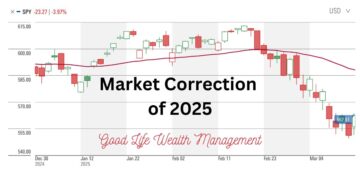One of the reasons I selected the financial planning software we use, MoneyGuidePro, is because it offers the ability to make projections based on historical OR projected returns. Most programs only use historical returns in their calculations, which I think is a grave error today. Historical returns were outstanding, but I fear that portfolio returns going forward will be lower for several reasons, including:
- Above-average equity valuations today. Lower dividend yields than in the past.
- Slower growth of GDP, labor supply, inflation, and other measures of economic development.
- Higher levels of government debt in developed economies will crowd out spending.
- Very low interest rates on bonds and cash mean lower returns from those segments.
By using projected returns, we are considering these factors in our financial plans. While no one has a crystal ball to predict the future, we can at least use all available information to try to make a smarter estimate. The projected returns used by MoneyGuidePro were calculated by Harold Evensky, a highly respected financial planner and faculty member at Texas Tech University.
We are going to compare historical and projected returns by asset class and then look at what those differences mean for portfolio returns. Keep in mind that projected returns are still long-term estimates, and not a belief of what will happen in 2017 or any given year. Rather, projected returns are a calculation of average returns that we think might occur over a period of very many years.
| Asset Class | Historical Returns | Projected Returns |
| Cash | 4.84% | 2.50% |
| Intermediate Bonds | 7.25% | 3.50% |
| Large Cap Value | 10.12% | 7.20% |
| Small Cap | 12.58% | 7.70% |
| International | 9.27% | 8.00% |
| Emerging Markets | 8.85% | 9.30% |
You will notice that most of the expected returns are much lower than historical, with the sole exception of Emerging Markets. For cash and bonds, the projected returns are about half of what was achieved since 1970, and even that reduced cash return of 2.50% is not possible as of 2017.
In order to estimate portfolio returns, we want two other pieces of data: the standard deviation of each asset class (its volatility) and the correlation between each asset class. In those areas, we are seeing that the trend of recent decades has been worse for portfolio construction: volatility is projected to be higher and assets are more correlated. It used to be that International Stocks behaved differently that US Stocks, but in today’s global economy, that difference is shrinking.
This means that our projected portfolios not only have lower returns, but also higher volatility, and that diversification is less beneficial as a defense than it used to be. Let’s consider the historical returns and risks of two portfolios, a Balanced Allocation (54% equities, 46% fixed income), and a Total Return Allocation (72% equities, 28% fixed income)
| Portfolio | Historical Return | Standard Deviation | Projected Return | Standard Deviation |
| Balanced | 8.53% | 9.34% | 5.46% | 10.59% |
| Total Return | 9.18% | 12.20% | 6.27% | 14.23% |
That’s pretty sobering. If you are planning for a 30-year retirement under the assumption that you will achieve historical returns, but only obtain these projected returns, it is certainly going to have a big impact on your ability to meet your retirement withdrawal needs. This calculation is something we don’t want to get wrong and figure out 10 years into retirement that we have been spending too much and are now projected to run out of money.
As an investor, what can you do in light of lower projected returns? Here are five thoughts:
- Use projected returns rather than historical if you want to be conservative in your retirement planning.
- Emerging Markets are cheap today and are projected to have the highest total returns going forward. We feel strongly that they belong in a diversified portfolio.
- We can invest in bonds for stability, but bonds will not provide the level of return going forward that they achieved in recent decades. It is very unrealistic to assume historical returns for bond holdings today!
- Investors focused on long-term growth may want more equities than they needed in the past.
- Although projected returns are lower than historical, there may be one bright spot. Inflation is also quite low today. So, achieving a 6% return while inflation is 2% is roughly comparable in preserving your purchasing power as getting an 8% return under 4% inflation. Inflation adjusted returns are called Real Returns, and may not be as dire as the projected returns suggest.







